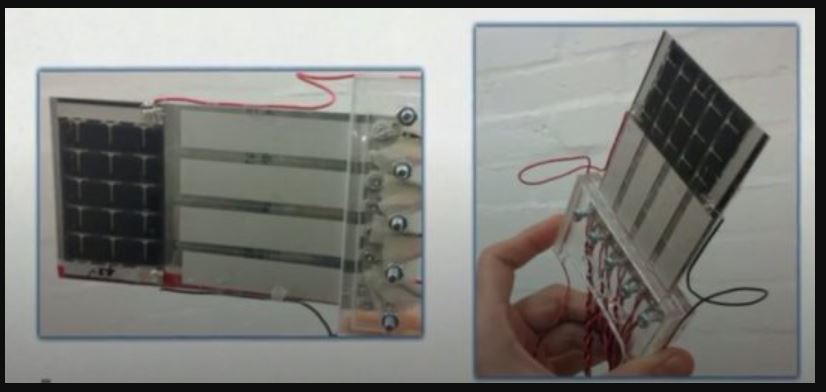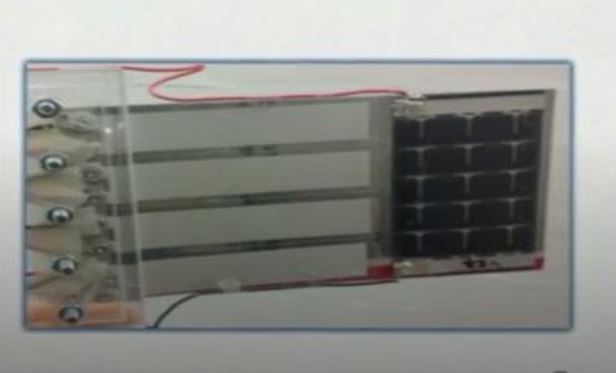
Scientists have developed flags that generate wind and solar energy. They created the energy-harvesting flags using flexible photovoltaic cells and flexible piezoelectric strips.
With piezoelectric strips, the flags generate power through movement. The photovoltaics allow the flags to convert solar radiation, i.e., sunlight, into electricity.
The scientists, from the University of Manchester in England and the Facultad de Ingeniería en Mecánica y Ciencias de la Producción in Ecuador, wrote about their work in the journal Applied Energy (citation below). The authors were Jorge Silva-Leon, Andrea Cioncolini, Mostafa R.A. Nabawy, Alistair Revell, and Andrew Kennaugh.
According to the authors, this study is the most advanced of its kind to date anywhere in the world. It is also the first to harvest solar and wind energies simultaneously using inverted flags.
Flags can power small devices
These energy-generating flags can power remote sensors and small-scale electronic devices. They can power, for example, devices we use to monitor heat, sound levels, and pollution.
The researchers want to create sustainable and low-cost harvesting solutions. Specifically, technology that requires the minimum of maintenance but continues generating electricity. We refer to this strategy as ‘deploy-and-forget.’ Maintenance, in this context, refers to the time and money required to keep something in working condition.
Smart cities will most likely adopt deploy-and-forget technologies when they use remote sensors.
Lead author, Jorge Silva-Leon, a PhD student at Manchester’s School of Mechanical, Aerospace & Civil Engineering, said:
“Under the action of the wind, the flags we built bend from side to side in a repetitive fashion, also known as Limit-Cycle Oscillations. This makes them perfectly suited for uniform power generation from the deformation of piezoelectric materials.”
“Simultaneously, the solar panels bring a double benefit: they act as a destabilizing mass which triggers the onset of flapping motions at lower wind speeds, and of course are able to generate electricity from the ambient light.”
Wind and solar energies well suited
Dr. Andrea Cioncolini, an Associate Professor/Senior Lecturer in Thermal Hydraulics at Manchester’s School of Mechanical, Aerospace & Civil Engineering, added:
“Wind and solar energies typically have intermittencies that tend to compensate each other. The sun does not usually shine during stormy conditions, whereas calm days with little wind are usually associated with shiny sun.”
“This makes wind and solar energies particularly well suited for simultaneous harvesting, with a view at compensating their intermittency.”
To prove that their flags worked, the researchers used unique research techniques such as fast-video imaging. They also used object tracking with advanced data-analysis.
According to a University of Manchester press release:
“The developed harvesters were tested in wind speeds varying from 0 m/s (calm) to about 26 m/s (storm/whole gale) and 1.8 kLux constant light exposure, simulating a wide range of environmental conditions.”
“Under these operation conditions, total power outputs of up to 3-4 milli-Watts were generated.”
Researchers expect to develop concept further
Dr. Mostafa Nabawy, a Lecturer in Aerospace Engineering at Manchester’s School of Mechanical, Aerospace & Civil Engineering, said:
“Our piezo/solar inverted flags were capable of generating sufficient power for a range of low power sensors and electronics that operate in the micro-Watt to milli-Watt power range within a number of potential practical applications in avionics, land and sea remote locations, and smart cities.”
”We hope to develop the concept further in order to support more power-demanding applications such as an eco-energy generating charging-station for mobile devices.”
Regarding the team’s current and future research directions, Dr. Alistair Revell, a Reader at Manchester’s School of Mechanical, Aerospace & Civil Engineering, said:
“We are currently making use of a novel computational framework for modelling and simulation developed at The University of Manchester, building on a long tradition of Computational Fluid Dynamics in the group.”
“The use of computers to model fluid-structure interactions is increasingly referred to as virtual engineering, and plays a key part in device development by reducing the number of models which need to be physically manufactured and tested.”
Citation
“Simultaneous wind and solar energy harvesting with inverted flags,” Jorge Silva-Leon, Andrea Cioncolini, Mostafa R.A. Nabawy, Alistair Revell, and Andrew Kennaugh. Applied Energy, Volume 239, 1 April 2019, Pages 846-85. DOI: https://doi.org/10.1016/j.apenergy.2019.01.246.

